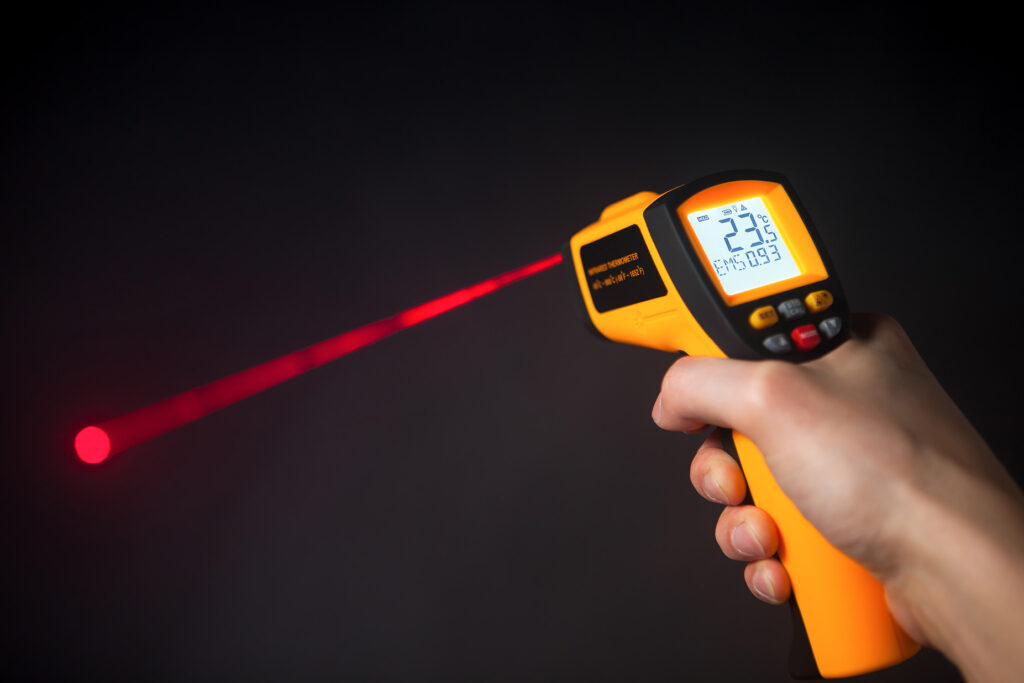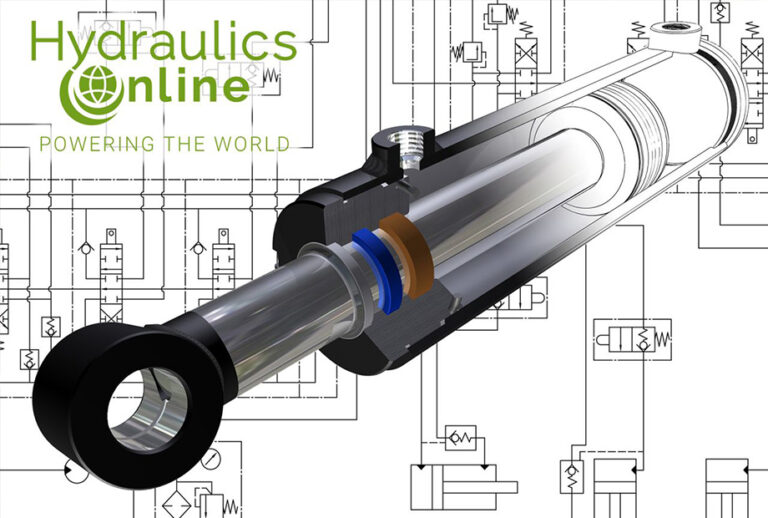Understanding Hydraulic Oil Leakage and its Impact is vital…
Hydraulic oil leakage is one of the most common – and costly – issues in hydraulic systems. It can lead to unreliable performance, increased energy consumption, elevated operating temperatures, and higher maintenance costs. What makes it especially problematic is that it often goes unnoticed until significant damage has already occurred.
What Causes Hydraulic Oil Leakage?
While most leaks result from surface wear on hydraulic components, several other factors can contribute:
- Poor system design – including inadequate sealing or excessive pressure
- Incorrect equipment selection – using components not rated for the application
- Manufacturing defects – such as poor quality control or improper assembly
- Low oil viscosity and high temperatures – which reduce sealing effectiveness and increase the risk of leaks
One of the earliest signs of hydraulic oil leakage is a drop in system performance – slower cycle times, inconsistent actuator movement, or rising fluid temperatures. These symptoms often precede visible leaks.
The Role of Viscosity in Preventing Leaks
Maintaining the correct hydraulic oil viscosity is essential. If the oil is too thin (low viscosity), it can escape through small clearances and fail to lubricate properly. Many OEMs specify a maximum viscosity range to ensure optimal sealing and performance.
To prevent leakage:
- Choose the right hydraulic oil for your system’s temperature range
- Monitor and control oil temperature to maintain stable viscosity
- Regularly inspect for early signs of wear or seal degradation
By proactively managing oil selection and system temperature, end users can significantly reduce the risk of hydraulic oil leakage and extend equipment life.
A hydraulic oil leakage can be found in one of two ways:
Infrared Thermometers: A Non-Invasive Way to Detect Hydraulic Oil Leakage
Infrared thermometers are a valuable tool for identifying early signs of hydraulic oil leakage, especially when internal leaks generate heat that isn’t immediately visible. These devices allow for non-contact temperature measurement, making them ideal for monitoring components during operation without disrupting the system.
One of the key advantages of infrared thermometers is their ability to detect abnormal temperature patterns – particularly in components like relief valves. For example:
- Elevated temperatures in relief valves may indicate internal leakage or improper pressure settings
- These heat anomalies could go undetected, due to the hydraulic system’s cooling or distribution of heat throughout the equipment.

By regularly scanning critical components with an infrared thermometer, technicians can catch subtle signs of inefficiency or leakage before they escalate into major failures.
Ultrasonic Detection: Pinpointing Internal Leaks
Ultrasonic detectors identify high-frequency sound waves produced by fluid escaping through small internal gaps. This method is especially useful for:
- Localising internal leakage in valves, cylinders, or pumps
- Diagnosing issues without dismantling the system
However, ultrasonic detection has limitations:
- It does not measure the volume of the leak
- To quantify the leak, a flow meter or similar diagnostic tool is required
Tip: Repeatedly topping up lost fluid may seem cheaper short-term, but over time it’s often more cost-effective – and safer – to repair the root cause or replace the oil entirely. Always factor in safety and environmental regulations when dealing with hydraulic fluid loss.
UV Dye Tracing: Revealing External Leaks
For external leaks, UV-sensitive dyes offer a fast and reliable solution:
- The dye is compatible with most hydraulic fluids and component surfaces
- When mixed with the oil and exposed to a black light, it produces a bright green-yellow glow
- This makes it easy to visually trace the exact location of the leak – even in tight or concealed areas
UV dye tracing is especially useful during routine inspections or when leaks are suspected but not visible to the naked eye.
By combining ultrasonic detection for internal leaks and UV dye for external ones, you can build a comprehensive leak detection strategy – minimising downtime, reducing fluid loss, and protecting your hydraulic system from long-term damage.
Hydraulic Oil Contamination
A Hidden Trigger for Hydraulic Oil Leakage
Contamination is one of the leading causes of poor performance and hydraulic oil leakage across hydraulic systems. It can originate from multiple sources, including:
- The hydraulic oil itself (especially if improperly stored or handled)
- Environmental exposure – dust, moisture, and airborne particles
- Component wear from seals, valves, or pumps
- Residual particles from manufacturing or servicing operations

Keeping your hydraulic oil contamination-free is vital. Contaminants can degrade the fluid, disrupt pressure control, and impair flow regulation – leading to:
- Internal hydraulic oil leakage
- Reduced system responsiveness and valve efficiency
- Excessive heat generation and wasted horsepower
- Increased risk of system failure or unscheduled downtime
Preventing contamination requires proper fluid handling, filtration, regular oil testing, and airtight maintenance procedures.
Hidden Drivers of Hydraulic Oil Leakage and System Corrosion
Contaminants in hydraulic systems are not just an inconvenience – they’re a leading contributor to hydraulic oil leakage, component degradation, and total system failure. One of the most corrosive offenders is water, which can enter the system through:
- Design flaws such as unsealed reservoirs or venting issues
- Poor maintenance practices and infrequent fluid inspection
- Incorrect fluid-servicing procedures, including exposure during top-ups or fluid transfers
Once inside, water can trigger corrosion of internal surfaces, including valves, cylinders, and pump components – creating wear paths that allow oil to escape and seals to fail.
Miscible and Immiscible Fluid Contamination
Contamination also arises from mixing incompatible fluids – whether miscible (blendable) or immiscible (non-blendable). For example:
- Miscible fluids may not form solids, but can still compromise oil properties like viscosity, lubricity, or oxidation resistance
- Immiscible liquids can separate within the system, reducing lubrication efficiency and clogging filters
Even if some oils are physically compatible, mixing fluids without proper cleaning or compatibility testing alters the oil’s chemical profile and can interfere with:
- System pressure regulation
- Heat dissipation
- Seal integrity
This kind of contamination increases the risk of internal hydraulic oil leakage, wasteful energy use, and overheating.
Effects of Hydraulic Oil Contamination: From Erosion to System Failure
Contamination in hydraulic oil doesn’t just circulate – it transforms your fluid into a mechanism for component damage. Over time, contaminants build up and spread across valves, pumps, and actuators, leading to reduced performance, wasted energy, and even hydraulic oil leakage.
Particle Size and Its Impact
The damage caused by contamination depends heavily on the size of the particles involved:
- Silt-sized particles may seem harmless at first but gradually wear down internal surfaces and disrupt lubrication, reducing long-term efficiency.
- Medium-sized particles – those similar in size to the clearance between moving parts – can jam components and accelerate abrasion.
- Large particles are often the most immediately destructive, blocking ports and passageways, which leads to critical malfunctions and halted operation.
Without proper filtration and fluid maintenance, these particles move freely through the system, undermining control over pressure and flow, and increasing operating temperatures.
Contamination-Driven System Failures
Hydraulic system malfunctions linked to contamination typically fall into three categories:
- Degradation – slow, ongoing wear that reduces system accuracy and responsiveness
- Transient failure – sporadic breakdowns that can be hard to diagnose but disrupt operations
- Catastrophic failure – complete failure of a system or component, often requiring costly replacement
To avoid these outcomes, contamination control must be part of every maintenance plan – beginning with fluid cleanliness, particle monitoring, and proper filter selection.
Preventing contamination
For some hydraulic systems, contamination can become a recurring issue. However, the following preventative actions can be taken in order to prevent catastrophic failure.
Choosing the Right Hydraulic Filter
A hydraulic filter is a critical component in maintaining fluid cleanliness and preventing hydraulic oil leakage. Selecting the right filter ensures that particle contaminants are removed from the system before they can jam or damage components through abrasive wear.
Choosing the Right Hydraulic Oil
Selecting the correct hydraulic oil is crucial for system integrity, and plays a key role in minimising wear, contamination, and the risk of hydraulic oil leakage.
Key considerations include:
- Use fluid specified for your system – Not all hydraulic oils are created equal. Viscosity, additive package, and temperature tolerance must match the manufacturer’s requirements.
- Avoid mixing oils – Even if alternate fluids are permitted, mixing products without proper cleaning can result in chemical incompatibilities. This may lead to sludge formation, seal degradation, and internal leakage.
- Thorough system flushing – If changing oil types, clean the system thoroughly to remove residual fluid and prevent cross-contamination.
- Regulatory compliance – Always consider environmental and hazardous material guidelines when selecting or disposing of hydraulic oils. Look for oils with reduced toxicity or biodegradable options when feasible.
Using the wrong oil – or failing to manage fluid changes properly – can compromise system stability, reduce equipment life, and escalate maintenance costs due to increased contamination and leakage risk.
Proper Fluid Handling and Storage
Correct storage and handling practices play a critical role in maintaining hydraulic oil integrity and preventing contamination-related hydraulic oil leakage. Neglecting these basics can introduce moisture, airborne particles, or degraded oil into the system before it’s even used.
To keep fluids clean and stable:
- Keep containers sealed – Hydraulic oils should remain in sealed containers until they’re ready for use. Loose or damaged lids can invite moisture and airborne contaminants.
- Inspect container lids regularly – Make sure caps are tight and intact during storage. Even small gaps allow air exchange, which can introduce humidity.
- Control temperature fluctuations – Repeated heating and cooling causes containers to expand and contract, pulling in air and moisture. Condensation can develop, leading to water contamination in the oil.
- Monitor for condensation buildup – Moisture in stored oil can lead to corrosion, degradation, and internal leakage once the fluid enters the system.
Clean fluid starts with proper storage. Protecting oil from contamination at the source minimizes system wear, improves reliability, and helps prevent leaks before they begin.
Maintaining a Hydraulic System
Routine maintenance is essential for the longevity and reliability of any hydraulic system. With frequent use, components experience natural wear – and without proper checks, this can lead to hydraulic oil leakage, contamination, and equipment downtime.
Water Contamination in Hydraulic Systems
Water contamination is one of the most prevalent – and destructive – forms of hydraulic oil contamination. Once present in the fluid, water accelerates corrosion, reduces lubrication effectiveness, and contributes to internal hydraulic oil leakage.
How Water Enters the Hydraulic System
Water can infiltrate hydraulic oil through various pathways:
- Worn seals and breathers – Allow moisture and ambient humidity into the system
- Condensation buildup – Occurs due to temperature fluctuations, especially in unsealed reservoirs
- Leaking heat exchangers or coolers – Introduce water directly into the fluid circuit
Preventing water contamination requires:
- Robust system design – Including sealed components and protected reservoirs
- Consistent, high-quality maintenance routines – Catching leaks and seal issues early

While complete prevention may be time-consuming and expensive, failure to address water ingress can cause far greater damage over time.
Measuring Water Contamination in Hydraulic Oil
When monitoring water contamination in hydraulic systems – a key factor in preventing hydraulic oil leakage – two approaches are commonly used: absolute content and relative content. Each method provides a different perspective on water presence and helps identify risks before damage occurs.
Absolute Content
- Measures the total amount of water in the oil, expressed in parts per million (ppm)
- Gives a straightforward numerical reading to track contamination levels over time
- Useful for setting maintenance thresholds or comparing fluid samples
Relative Content
- Indicates the percentage of water saturation in the fluid at a specific temperature
- Helps determine whether the oil is nearing its saturation limit – when dissolved water begins forming free water
- Offers early warning for potential corrosion, seal wear, and system degradation
Monitoring both metrics ensures a complete understanding of water risk – absolute readings track buildup, while relative values show how close the system is to forming damaging free water.
Draining
In hydraulic systems, draining is a routine yet essential process that helps manage water contamination and prevent hydraulic oil leakage. Contaminants naturally separate in the reservoir due to differences in density:
- Air rises to the surface and escapes
- Water sinks to the bottom, where it can accumulate if not removed regularly
Failing to drain the system allows water to remain in contact with metal surfaces, increasing the risk of corrosion, fluid degradation, and internal leakage over time.
Tip: Installing automatic drain valves simplifies maintenance and ensures consistent removal of water.
Absorbent Filters
Absorbent filters play a key role in controlling water contamination in hydraulic systems – especially as part of broader strategies to reduce hydraulic oil leakage and component wear. These filters are embedded with absorbent polymers inside the filter matrix, which actively capture:
- Free water floating in the oil
- Emulsified water suspended in the fluid
However, it’s important to note:
- These filters are not suitable for large volumes of water – they can saturate quickly and lose effectiveness
- They do not remove dissolved or tightly emulsified water, which may still cause corrosion and system degradation
For systems with significant moisture intrusion, other methods like vacuum dehydration or coalescing filtration may be more effective.
Vacuum Dehydration Purifiers
Vacuum dehydration purifiers are highly effective tools for extracting water from hydraulic oil – helping prevent hydraulic oil leakage, corrosion, and fluid degradation. These systems work by exposing the oil to a partial vacuum, which lowers the boiling point of water and accelerates its removal.
Methods of Vacuum Dehydration
There are two common techniques:
Flash Distillation Vacuum Dehydration
- Applies heat under vacuum to rapidly boil off water from the oil
- Generates a stronger vacuum, resulting in more efficient water removal
- Downside: High heat and intense vacuum may lead to thermo-oxidative degradation, breaking down oil additives and reducing fluid quality
Mass Transfer Vacuum Dehydration
- Uses vapour pressure and diffusion without high heat
- Gentler on fluid properties, but less effective at removing large quantities of water
Both methods aim to maintain fluid integrity while minimising moisture – though flash distillation is typically favoured when aggressive drying is required, provided the oil is resilient to high temperature and additive loss.
We are the first choice for customers in over 130 countries worldwide, supplying a vast selection of hydraulic brands and components. You are guaranteed impartial, technical advice and optimal solutions. Every time.
Expand your Hydraulic Knowledge with more free content from our Fluid Power Technical Knowledge Hub…
Troubleshoot Air Contamination in a Hydraulic System
Air contamination is very common in a hydraulic system and can be found in hydraulic fluid in four different forms. In turn it can lead to your hydraulic systems underperforming, or even failing, in a number of ways.
Learn MoreThe Vital Role of Hydraulic Cylinder Seals
Hydraulic cylinder seals are commonly found in applications where components are exposed to liquids. They play a vital role within the hydraulic system, as they enable the transfer of liquid power into linear motion.
Learn MoreThe Ultimate Hydraulic Oil Guide
Hydraulic Oil is the life-blood of a hydraulic system and it is crucial that it is regularly checked and maintained, yet so often Hydraulic oil is overlooked.
That’s why we’ve created the ultimate guide to hydraulic oil…
Learn More






